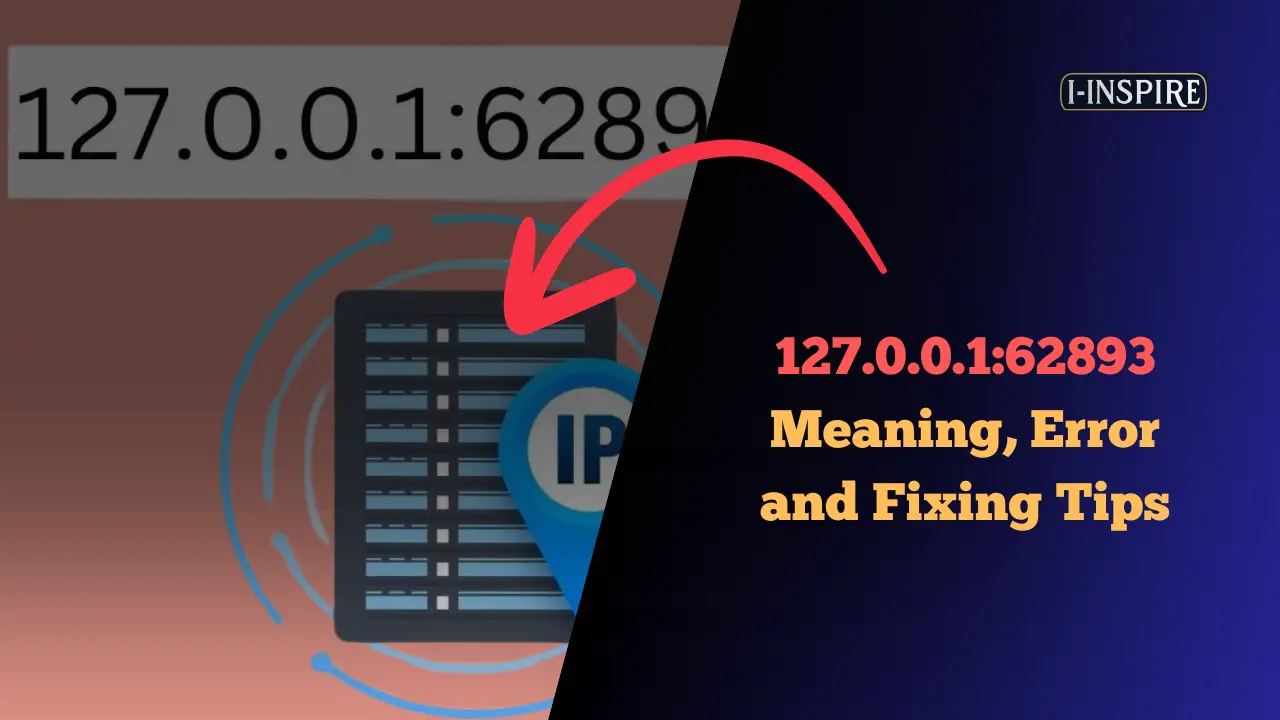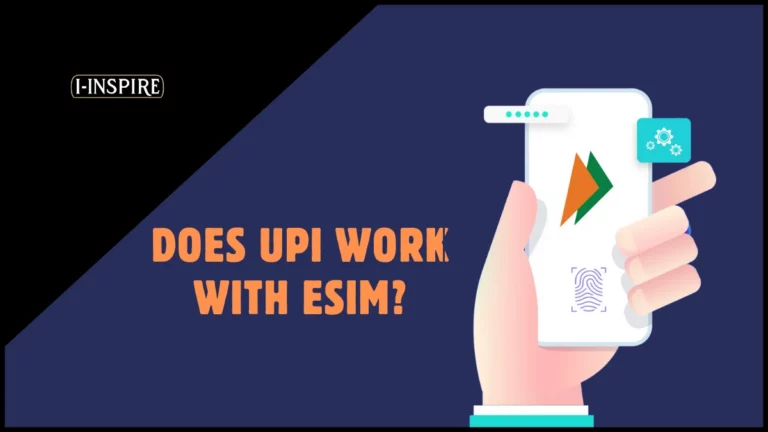127.0.0.1:62893 Meaning, Error and Fixing Tips
Hey there, tech enthusiasts and curious minds! Grab your favorite beverage, get comfy, and let’s embark on an exciting journey into the world of 127.0.0.1:62893. Whether you’re a seasoned developer, a network guru, or someone who loves to peek behind the digital curtain, this guide is tailor-made. We’re about to unravel the mysteries of this fascinating IP address and port combination, explore its significance, and arm you with practical tips to troubleshoot common issues. Trust me, by the end of this article, you’ll be the go-to person for all things localhost!
Understanding the Basics: What on Earth is 127.0.0.1:62893?
Alright, let’s break this down into bite-sized pieces. 127.0.0.1:62893 is like a secret handshake between you and your computer. It’s made up of two parts: an IP address (127.0.0.1) and a port number (62893).
The Magic of 127.0.0.1: Your Computer’s Home Address
Imagine your computer is a cozy little house in a bustling digital city. 127.0.0.1 is its home address. It’s special because no matter where you go in this vast digital landscape, 127.0.0.1 always leads back to your own computer. It’s like having a magic portal that always takes you home!
Developers affectionately call this address “localhost,” and for good reason. It’s local (right there on your machine) and it hosts (runs) various services. Here’s why it’s so cool:
- It’s always available, even without an internet connection
- It’s super fast because data doesn’t leave your computer
- It’s perfect for testing and development
The Role of Port 62893: Your Computer’s Communication Channels
Now, if 127.0.0.1 is your home address, think of 62893 as a specific door in that house. In tech-speak, we call this a port. Your computer has thousands of these ports, each potentially leading to a different service or application.
Why 62893, you ask? Well, it’s not a standard port number like 80 (which is usually reserved for web traffic). Developers often use these high-numbered ports for custom applications or services to avoid conflicts with well-known port numbers. It’s like choosing a unique room number in a massive hotel!
How 127.0.0.1:62893 Works: A Behind-the-Scenes Look
When you use 127.0.0.1:62893, here’s what happens:
- Your application sends data to this address.
- The operating system recognizes it as a loopback address.
- Instead of sending the data out to the network, it loops it back internally.
- The data arrives at port 62893 on your own machine.
It’s like having a conversation with yourself, but in computer terms! Let’s visualize this with a simple table:
| Step | Action | Destination |
|---|---|---|
| 1 | Data leaves application | 127.0.0.1:62893 |
| 2 | OS intercepts | Internal network stack |
| 3 | Data looped back | Local machine |
| 4 | Arrives at port 62893 | Application listening on this port |
Why Should You Care About 127.0.0.1:62893?
Now, you might be thinking, “This is all very interesting, but why does it matter?” Great question! Understanding 127.0.0.1:62893 is crucial for several reasons:
- Local Development: It’s the backbone of local web development. When you’re building the next big thing, you’ll likely test it on localhost first.
- Troubleshooting: Many network issues can be diagnosed by understanding how localhost and ports work.
- Security: Knowing about localhost helps you understand and implement better security practices in your applications.
- Performance Testing: It allows you to test your applications in a controlled environment without internet latency.
- Learning Networking: It’s a gateway to understanding more complex networking concepts.
Common Use Cases: Where You’ll Meet 127.0.0.1:62893
Let’s look at some real-world scenarios where you might encounter our friendly neighborhood 127.0.0.1:62893:
Web Development Scenarios
Imagine you’re building a fancy new website. You might run your development server on 127.0.0.1:62893. This allows you to:
- View your website as if it were live, but only on your machine
- Make rapid changes and see them instantly
- Test different browsers without uploading to a public server
For example, let’s say you’re developing a React application with a Node.js backend:
- Your React app runs on
http://127.0.0.1:3000 - Your Node.js API runs on
http://127.0.0.1:62893
This setup allows you to develop and test both frontend and backend locally, simulating a production-like environment without affecting the live site. It’s like having your own private playground!
Database Testing and Configuration
Database administrators often use localhost for testing and configuration. For instance:
- Running a local MySQL server for development
- Testing database migrations without affecting production data
- Optimizing queries in a safe, local environment
Here’s a practical scenario:
- Set up a local database server (e.g., MySQL) on
127.0.0.1:3306 - Your application connects to
127.0.0.1:62893for API requests - The API then interacts with the database on
127.0.0.1:3306
This configuration allows for comprehensive testing of database operations without risking your production data. It’s like having a sandbox where you can build and destroy castles without worrying about the real beach!
Microservices Architecture
In the world of microservices, localhost becomes even more crucial:
- Use localhost to test individual services
- Set up a local service mesh for complex architectures
- Simulate production-like environments on your local machine
For a microservices setup, you might have:
- Service A runs on
127.0.0.1:62893 - Service B runs on
127.0.0.1:62894 - Service C runs on
127.0.0.1:62895
This allows you to test inter-service communication locally, simulating a distributed system on a single machine. It’s like having a miniature version of your entire infrastructure right on your laptop!
The Good, The Bad, and The Buggy: Common 127.0.0.1:62893 Errors
Even in the comfort of localhost, things can go awry. Let’s look at some common errors you might encounter and how to fix them:
1. Connection Refused Error
This is like knocking on a door, but nobody’s home. It usually means:
- The application you’re trying to reach isn’t running
- The port (62893) isn’t open or listening
Fix: Make sure your application is running and correctly configured to listen on port 62893. It’s like making sure someone’s actually home before you knock!
2. Address Already in Use Error
Imagine trying to park in a spot that’s already taken. This error occurs when:
- Another application is already using port 62893
- Your application didn’t shut down properly last time
Fix: Find and close the application using the port, or choose a different port for your application. It’s like finding a new parking spot when your usual one is occupied!
3. Unable to Bind to Address Error
This is like trying to set up shop in a restricted area. It can happen if:
- You don’t have the right permissions
- There’s a system-level restriction on using that port
Fix: Run your application with administrator privileges or choose a port number above 1024 (which doesn’t require special permissions). It’s like getting the proper permits before setting up your lemonade stand!
4. Timeout Errors
These are the “Hello? Is anybody there?” of errors. They occur when:
- Your application is running but not responding quickly enough
- There’s a misconfiguration in your network settings
Fix: Check your application’s performance and network configuration. Increase timeout limits if necessary. It’s like giving your friend a bit more time to answer the door before you assume they’re not home!
Troubleshooting Like a Pro: Your 127.0.0.1:62893 First Aid Kit
When things go sideways with localhost, don’t panic! Here’s your troubleshooting toolkit:
A. Is Your Service Running?
First things first, make sure your application is actually up and running. Here’s a quick checklist:
- Check your task manager or process list
- Look for any error messages in your application logs
- Try restarting the application
It’s like making sure your car is actually turned on before you try to drive it!
B. Firewall Friendliness
Sometimes, your firewall can be a bit too protective. Here’s how to check:
- Temporarily disable your firewall and see if the issue resolves
- If it does, add an exception for your application or port 62893
- Remember to re-enable your firewall after testing!
Think of it as teaching your overprotective guard dog that the mailman is actually a friend!
C. Resolving Port Conflicts
If 62893 is already taken, you have two options:
- Find and close the application using the port
- Change your application to use a different port
To find what’s using the port:
- On Windows: Use the command
netstat -ano | findstr :62893 - On Mac/Linux: Use
lsof -i :62893
It’s like playing musical chairs with your applications, making sure everyone has a seat (port) to use!
D. Configuration Check
Double-check your application’s configuration files. Look for:
- Correct IP address (127.0.0.1)
- Correct port number (62893)
- Any typos or misconfigurations
It’s like proofreading your essay before submitting it – a small typo can change everything!
E. Network Diagnostic Tools
Get friendly with these tools:
- Netstat: Shows network connections and their states
- Wireshark: For deeper packet analysis
- Telnet: To test basic connectivity to the port
These are like your digital stethoscope, x-ray machine, and thermometer – essential tools for diagnosing what’s going on inside your network!
Best Practices for Using 127.0.0.1:62893
Now that you’re becoming a localhost guru, let’s talk about some best practices:
Security First!
Even though 127.0.0.1 is local, security is still important:
- Don’t expose services running on localhost to the internet without proper security measures
- Use strong authentication for any services, even local ones
- Regularly update and patch your development environment
It’s like locking your doors even when you’re home – better safe than sorry!
Efficient Testing Strategies
Make the most of your local environment:
- Use version control to track changes in your local projects
- Set up automated tests that utilize 127.0.0.1:62893
- Create different localhost configurations for various testing scenarios
Think of it as creating a well-organized workshop where you can experiment freely!
Configuration Management
Keep your localhost configurations organized:
- Use environment variables to manage different settings
- Document your localhost setup for team collaboration
- Consider using tools like Docker for consistent development environments
It’s like keeping a tidy toolbox – you’ll work much more efficiently when you know where everything is!
Advanced Topics: Taking Your Localhost Game to the Next Level
Ready to dive deeper? Let’s explore some advanced concepts:
IPv6 and Localhost
Did you know there’s an IPv6 version of localhost? It’s ::1. Here’s a quick comparison:
| Version | Localhost Address | When to Use |
|---|---|---|
| IPv4 | 127.0.0.1 | Most common, widely supported |
| IPv6 | ::1 | Future-proof, used in modern systems |
It’s like knowing both the old and new addresses for your favorite shop – useful as technology evolves!
Containerization and Localhost
In the world of Docker and containers, localhost takes on a new meaning:
- Each container has its own localhost
- To communicate between containers, you need to use container networking
- Port mapping allows external access to containerized services
It’s like each container is its own little universe with its own laws of physics!
Cloud Computing Considerations
When working with cloud services:
- Localhost in cloud instances refers to that specific instance
- Use cloud provider tools for local development that mimics cloud environments
- Be aware of how cloud networking might differ from your local setup
Think of it as understanding how your local weather differs from the global climate – both important, but in different contexts!
Conclusion: You’re Now a Localhost Legend!
Whew! We’ve covered a lot of ground, from the basics of 127.0.0.1:62893 to advanced topics like containerization and cloud computing. Let’s recap the key points:
- 127.0.0.1 is your computer’s way of talking to itself
- Port 62893 is just one of many possible doors for that communication
- Understanding localhost is crucial for development, testing, and troubleshooting
- Common errors have common solutions – don’t panic!
- Best practices and advanced topics add new dimensions to your localhost expertise
Remember, mastering localhost and port management is more than just a technical skill – it’s a superpower in the world of software development and networking. The next time you encounter 127.0.0.1:62893, you’ll know exactly what’s going on behind the scenes.
So go forth, experiment, break things (locally, of course), and become the localhost hero you were always meant to be! And remember, in the vast digital universe, there’s no place like 127.0.0.1. Happy coding, and may all your localhost adventures be error-free and enlightening!





